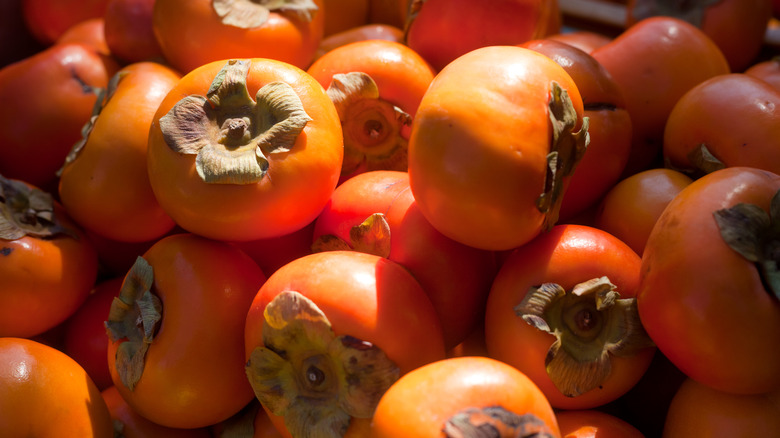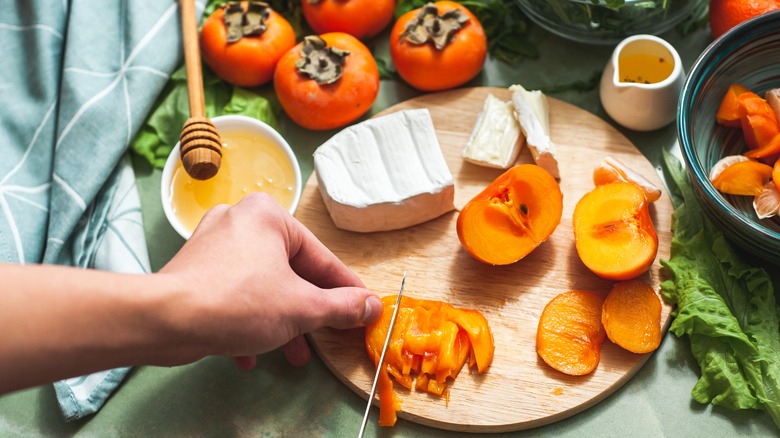Should You Eat The Skin On Persimmons?
The humble persimmon, a classic fall fruit, often flies under the radar when compared to the other highlights of the autumn harvest, like apples, pumpkins, and pears. With their yellow-orange flesh, soft jelly-like texture, and shape reminiscent of tomatoes, these indulgent fruits can impart a sweet, honeyish flavor akin to an apricot when ripe. But bite into an unripe persimmon, and its sharp bitterness will leave your mouth burning. The fruits originally emerged in the mountain areas of southern China, but have spread across the globe to Japan, South Korea, Brazil, Spain, and the United States, where they are relatively less common, but can mostly be found in California (via IntechOpen).
Recipe developer Susan Olayinka, of the Flexible Fridge, suggested using the fruits to make an easy persimmon jam, saying that "the fact that it only comes out [in] fall makes it even more desirable." Olayinka described the fruits as a "honey-flavored fruit which is a cross between grapes and apricot." Persimmons aren't just sweet and delicious, but you can also get a healthy dose of nutritional benefits with each bite. According to research in the National Library of Medicine, these fruits are full of nutrients like magnesium, thiamin, phosphorous, and riboflavin, which can help decrease risks of heart disease and age-related mental decline. Packed with vitamin C for anti-inflammation and vitamin A for eye health, a dose of persimmons can help boost your health (via Healthline). Persimmons may be good for you, but how edible is its peel?
Persimmon peels are totally edible
Maybe you're used to peeling and discarding persimmon skin when making juicy persimmon pulp for an old-fashioned persimmon pudding, or when poaching the semi-firm slices in a robustly spiced syrup with cinnamon and star anise for a compote, as Martha Stewart recommends. You can bake them into pies, puddings, and cakes, or blend them into your favorite smoothies, but can you eat their taught peels, ranging in color from pale yellow to a deep, red-orange?
The answer is yes, you can. If you're dealing with a sweet Fuyu persimmon, all you have to do is rinse the fruit, remove the leaves, and slice it up as you would an apple. If you've only got Hachiyas, otherwise known as bitter or astringent persimmons, you should wait until they ripen to the point where they become soft and ready to burst (via AllRecipes). Then, simply cut the now-soft persimmon in half and scoop out its custard-like flesh with a spoon. So next time you pick up a bundle of this tasty fruit from your local farmers' market, bear in mind that it's not just the delicious fruit inside that you can enjoy.

